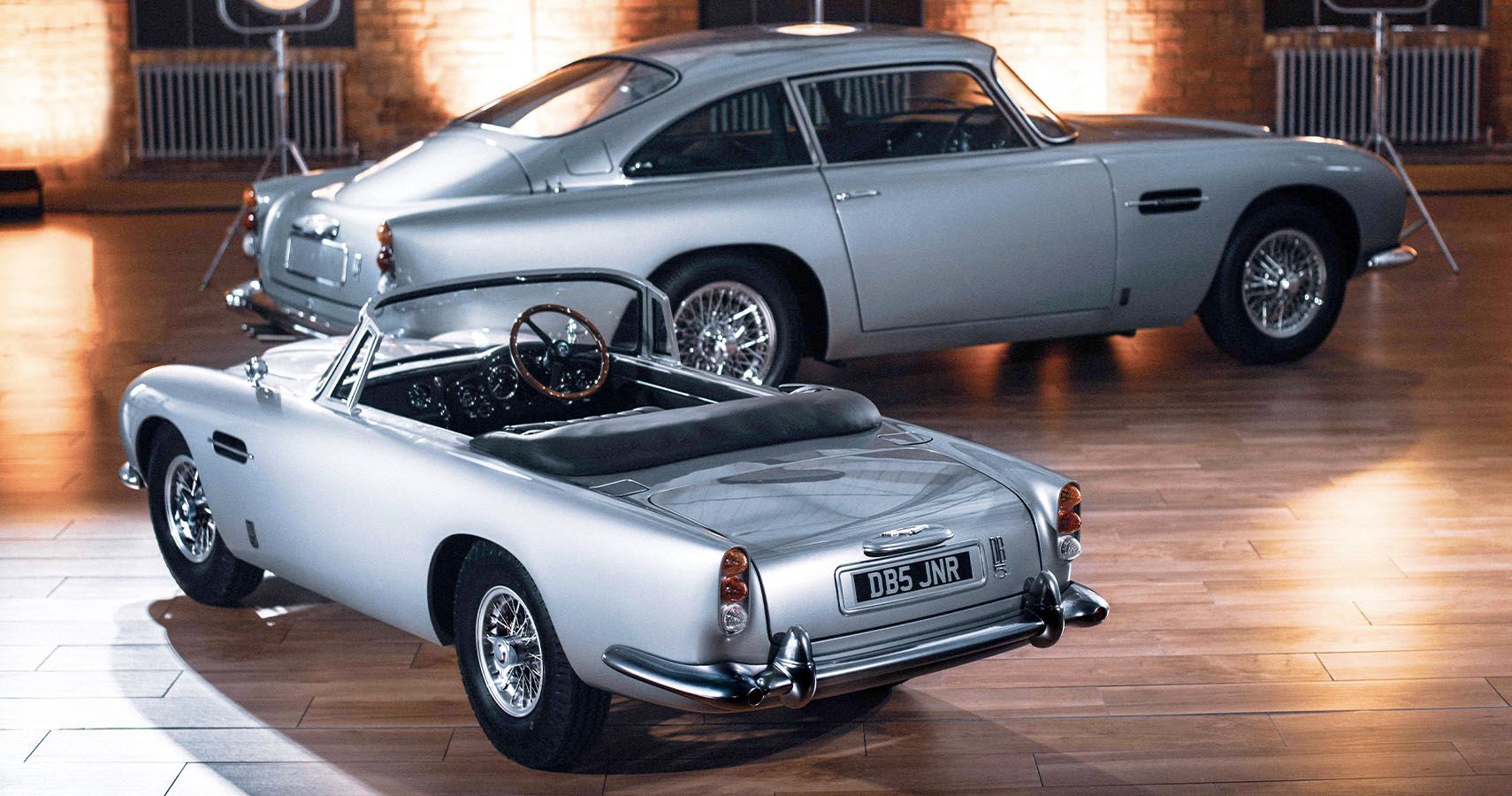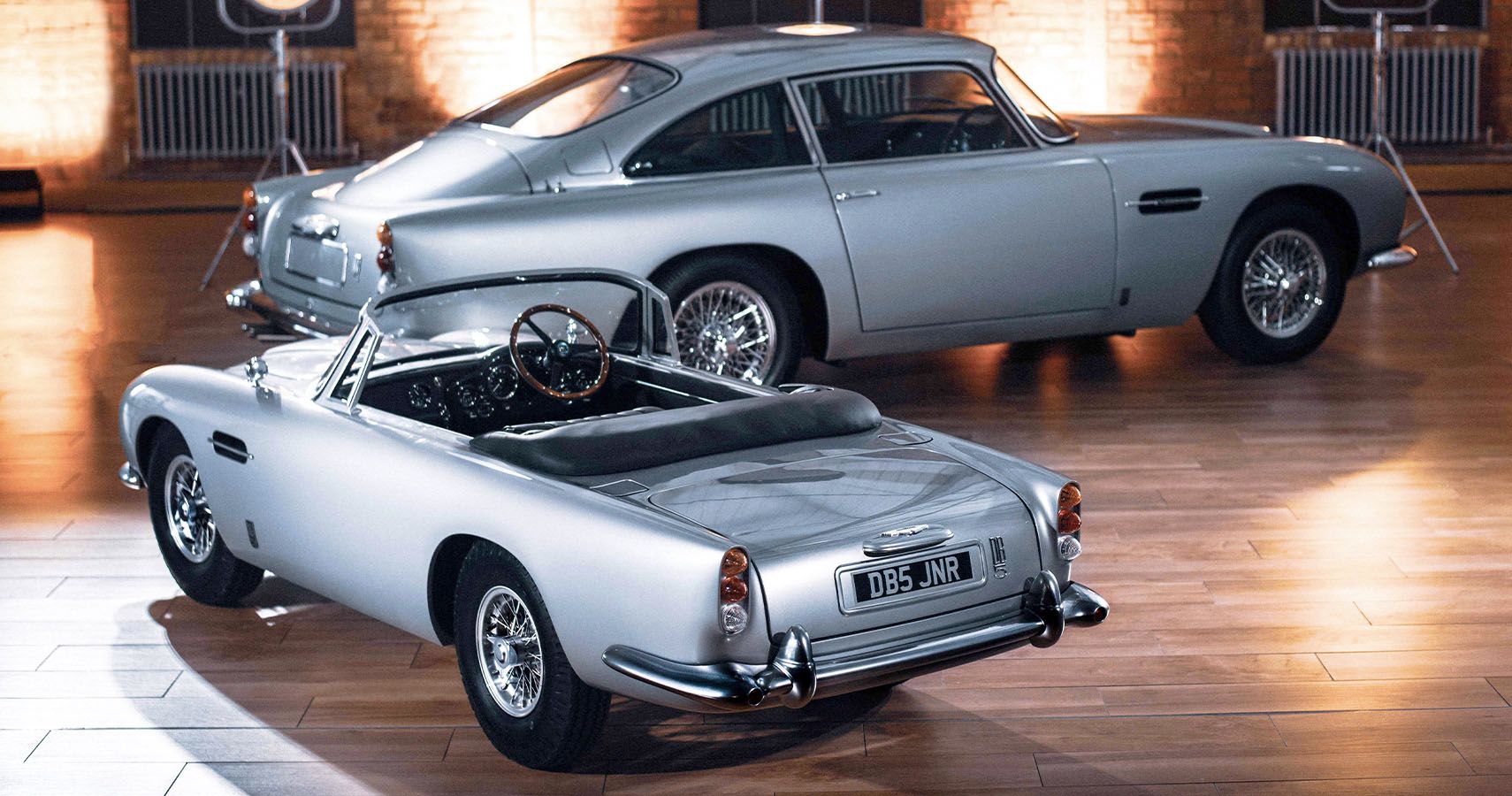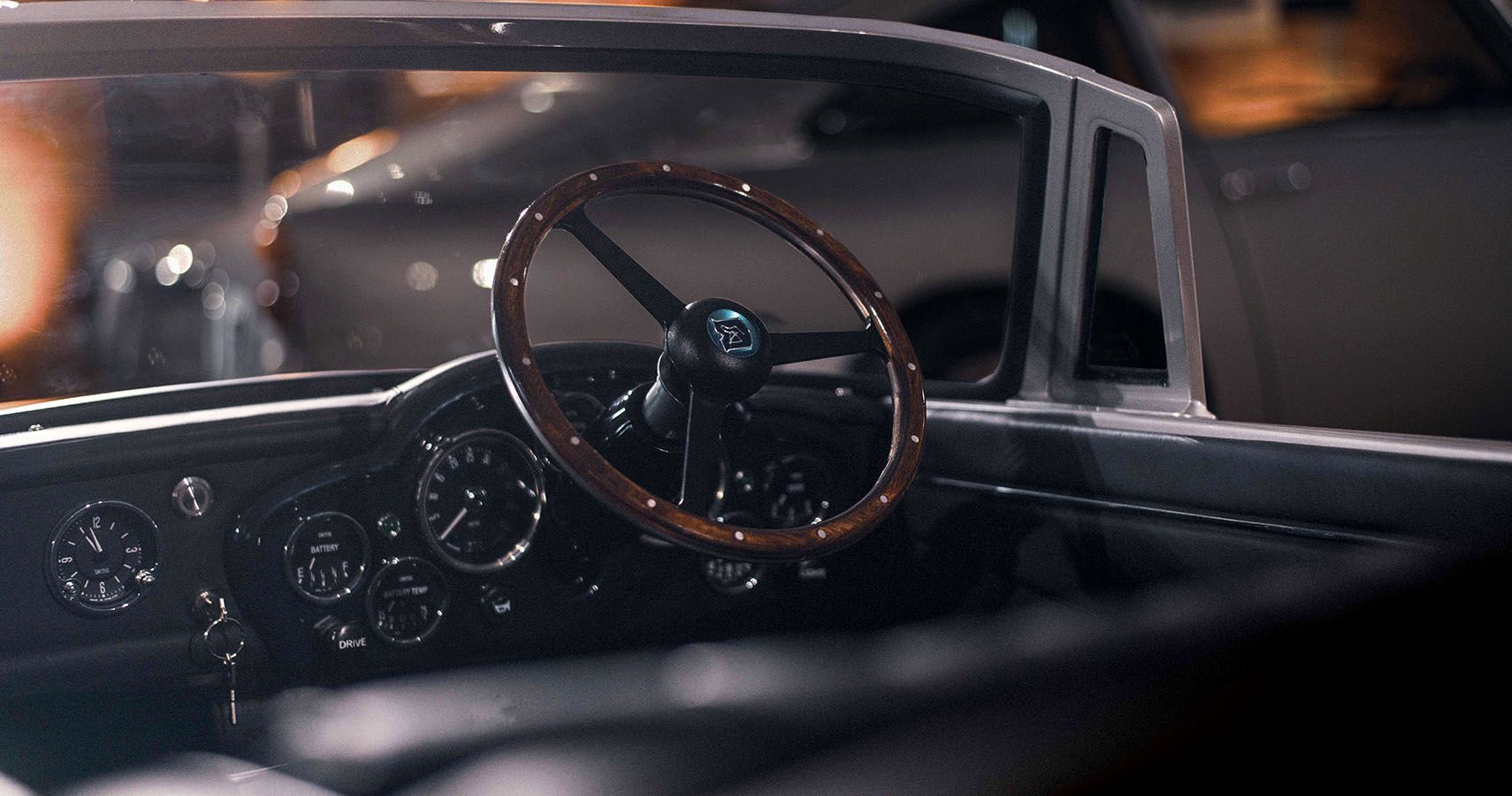This is Part 2 of a conversation with Ben Hedley, CEO of The Little Car Company. Hedley has spearheaded the recent release of two miniaturized, electrified automotive icons, the Bugatti Baby II and the Aston Martin DB5 Junior.
Hop over to Part 1 for a look at Hedley’s process developing Bugatti’s most affordable model, the three-quarters-scale Baby II.
Just a few short weeks after pre-orders for the Baby II commenced earlier this summer, Hedley and The Little Car Company (TLCC) followed up with another massive reveal: the Aston Martin DB5 Junior, based on the iconic car driven by Sean Connery in the early James Bond films.
TLCC's DB5 Junior might lack James Bond gadgetry (for now) but it sure looks the part, with all the same attention to detail that made the Bugatti Baby II so popular. But it's also a step forward in terms of power, performance, and technology.
In my conversation with Hedley, he took a deep dive into the next-level design and engineering decisions behind the DB5 Junior and discussed what’s on deck for TLCC after these two recent debuts.
James Bond Would Approve
-
[caption id="" align="alignnone" width="1710"]
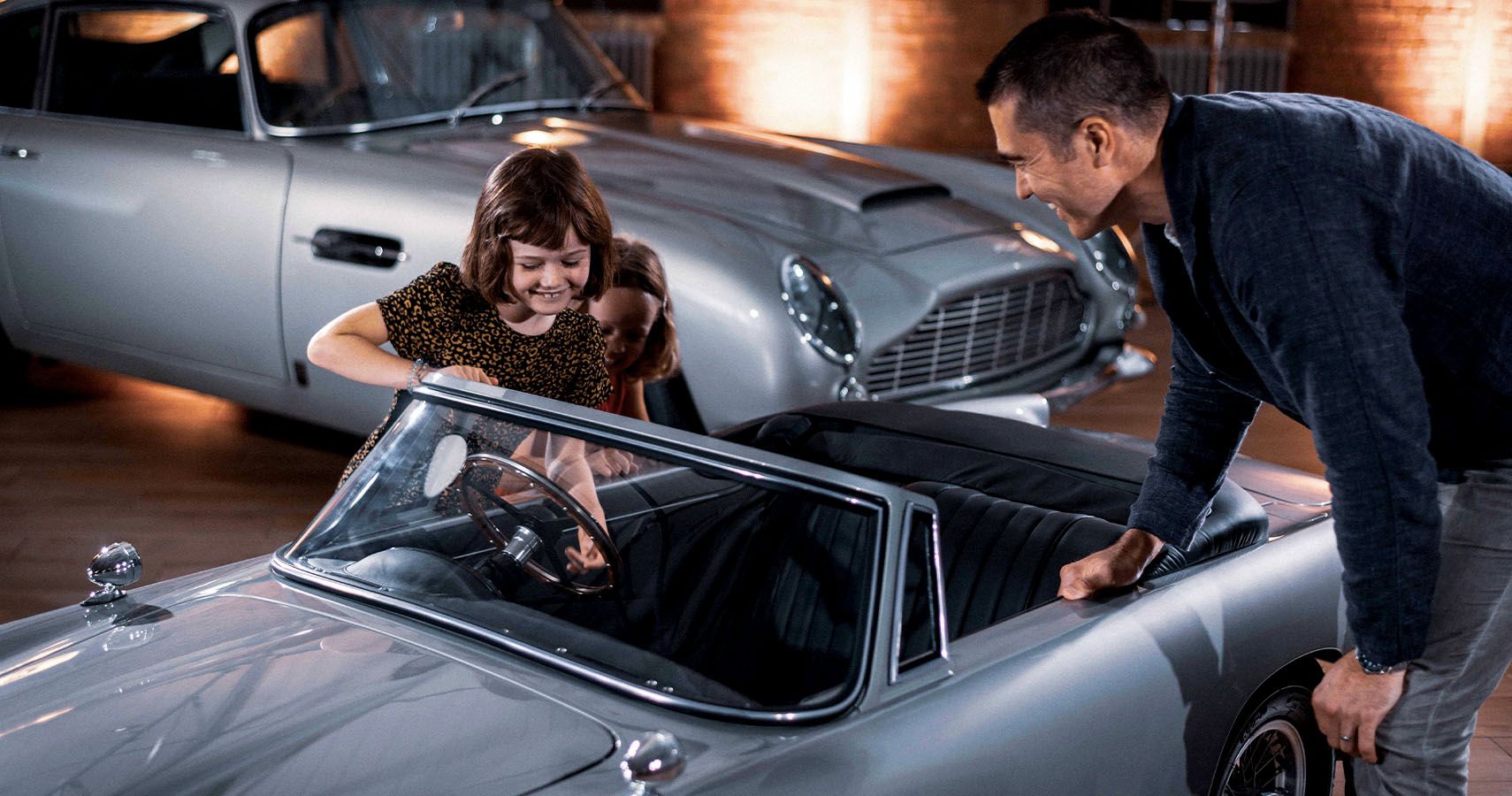 via The Little Car Company[/caption]
via The Little Car Company[/caption]
Following the hectic process that led to the Baby II, TLCC’s approach to the Aston Martin DB5 Junior has been a bit different. As CEO, Hedley’s told me his goal for the company has been, “To do something that brought parents and children together, to drive together.”
Modern 3D-scanning tech had allowed TLCC to design an exact miniaturized reproduction of the original Type 35 with a potent electric drivetrain that even includes a limited-slip differential between the rear wheels. The only problem was that the Baby II came out so tiny that a full-sized adult can feel a bit cramped while driving. And forget the idea of parents and kids driving together.
“Let’s just say the ergonomics have been challenging, more than a little bit,” said Hedley.
Getting technical, a 75% replica isn’t actually three-quarters the size of the original. In reality, that means the length, width, and height are all set at 75% scale. So, the eye perceives a linear area of 75% times 75%, which equals only 56.25%. To solve for volume, multiply 56.25% by 75% again, and the result is less than half—the DB5 Junior is just over 42% of the original’s actual size in the three-dimensional world.
With the goal of parents and children driving together in mind, Hedley built up to the biggest decision surrounding the DB5 Junior: opting to employ a full aluminum honeycomb tub chassis beneath the skin to allow for more space.
Hedley now claims that a 6’6” driver and a 5’8” passenger can comfortably fit in the tiny car.
Reinventing the chassis came with the added benefit of keeping the car stiffer and lighter but also messed with weight distribution—like the mini Bugatti, the Aston’s nose isn’t weighed down by an internal-combustion engine. To help keep the balance closer to ideal in a rear-engined, rear-wheel-drive EV that could easily create tons of understeer with a limited-slip differential, TLCC mounts the DB5 Junior’s two batteries as far forward under the bonnet as possible.
The layout allows for a relatively respectable weight distribution of about 40:60 front-to-rear.
Under The Skin
In terms of performance, those batteries are pretty impressive. Hedley claims the Bugatti Baby II can run full-bore at 30 miles per hour and achieve 30 miles of range—and the highest-spec DB5 Junior will do even more speed and more range.
No Tesla transplants here, either. The batteries for the Baby II are Samsung cells in TLCC’s smart stainless-steel casing, while the DB5’s are sourced from a new partner in the Netherlands. Both cars employ regenerative braking like a Tesla and can be driven with just one pedal.
The motors are built in the UK, while the rear axles hail from the USA (here again, Hedley isn’t allowed to say who makes them). Critically, the batteries can be swapped out easily—a big plus so that junior drivers won’t get peeved while waiting five hours for a charge.
Consideration for junior drivers also contributes to a few other changes between the original DB5 and the Junior. For one, TLCC has to stick with open-top layouts, which meant giving up the purer shape of the “James Bond” coupe in favor of the DB5 Volante. But the Volante’s windshield features sharp corners that had to be rounded out for the safety of smaller skulls.
And that LSD? Well, as great as it sounds from a performance sports car perspective, it was actually integrated after TLCC realized plenty of these cars would get driven on lawns and in backyards—with the low-end torque of the all-electric drivetrain, Hedley didn’t want kids stuck in place, slipping around with one wheel spinning uselessly on the grass.
The Devil In The Details
So, yes, these are extremely expensive, entirely over-engineered toys for the world’s wealthiest car collectors and their children. But the attention to detail over at The Little Car Company can best be described as obsessive, which is a major factor in the price point.
Hedley would like to trim that sticker price down a bit, but at the moment, it’s just unfeasible from a manufacturing perspective.
After all, he explained, “A DB5 costs a million dollars. We’re looking at $40,000 for the cars and that’s because we’ve got the same number of wire wheels as a normal full-size car—and they all have to be handmade. And we’ve got the same number of steering wheels, all the dials. If you’re going into all this detail, it’s hard to do it cost-effectively.”
In the meantime, that bundle of cash buys the world’s smallest quick-release steering wheel, which also happens to be an authentic wood miniature, plus a fuel gauge on the DB5 that’s been converted to a battery gauge but that uses the same font and layout, not to mention the exact same clock used for the original car.
And don’t forget the solid-silver Bugatti badge on the Baby II’s nose, which weighs in at a hefty 50 grams.
What’s Next
-
[caption id="" align="alignnone" width="1710"]
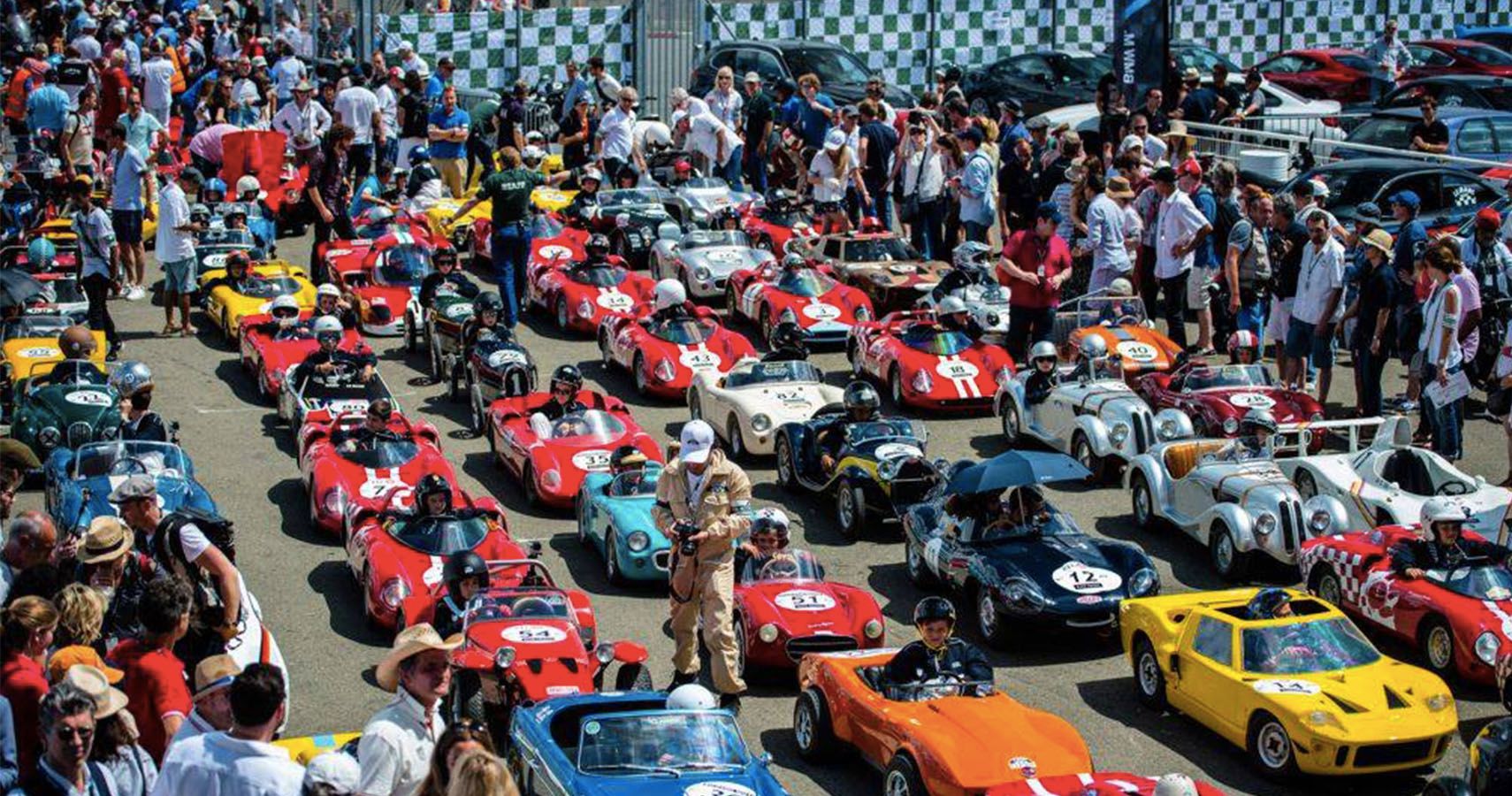 via Motorlegend[/caption]
via Motorlegend[/caption]
For The Little Car Company and its passionate CEO, the future is all about building community. Hedley knows they’ve got a good thing going, from the adorable images to the actual driving experience.
One of Hedley’s favorite moments within the whole process comes just after anyone test drives their first TLCC car, saying, “We call it the first-mile smile. People just get out of it and they’re like, ‘Oh my god, this is amazing.’”
TLCC plans to build a global community of owners—both Bugatti and Aston recognize the little EVs as official production models, which translates to membership in owners clubs and trusts.
TLCC even has plans to build shipping containers so that their cars can travel the globe and attend events like Goodwood. Another benefit of ownership might be a motorsport program similar to Ferrari’s system for the track-only FXX (with the added benefit that TLCC’s products are silent, so they can run track days when circuits might otherwise have noise restrictions in place).
If that sounds aggressive for a new car company with only two miniature models under its belt, the answer is yes, TLCC certainly is looking to build the same combination of performance and pedigree as Ferrari.
Hedley’s team includes engineers and designers that have worked for brands as iconic as McLaren, Aston Martin, Jaguar Land Rover, Radical Sportscars, Ariel Motor Company, and TVR—so the knowledge base is in place.
Building On A Solid Foundation
-
[caption id="" align="alignnone" width="1710"]
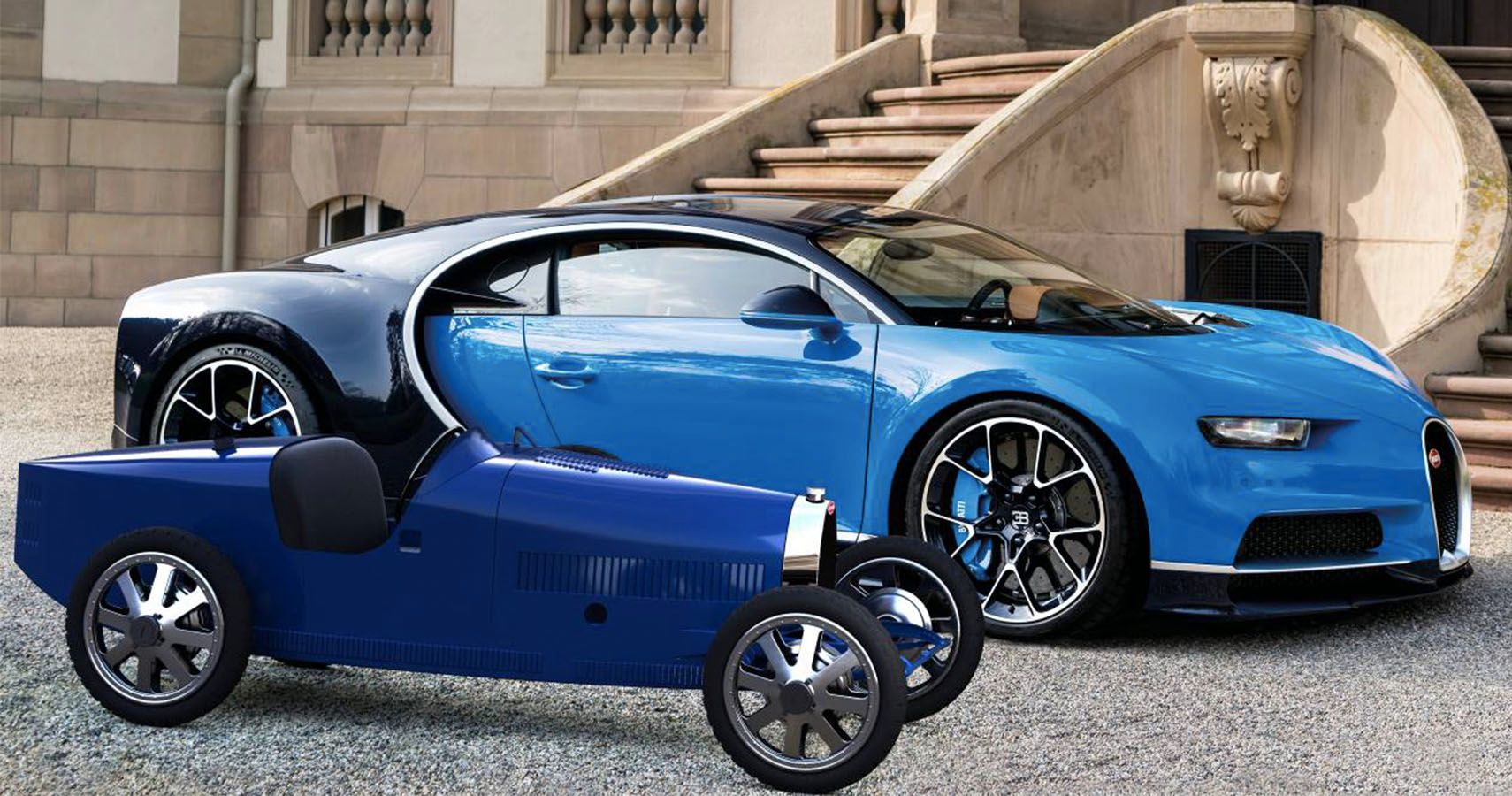 via The Little Car Company[/caption]
via The Little Car Company[/caption]
Pre-orders for the Bugatti Baby II sold out in only three weeks, so the financing sounds to be in place, too (not to mention established partnerships with Aston Martin and Bugatti).
So, what’s on the horizon? Well, Hedley has to stay pretty cagey due to contractual obligations, but he told me there’s a big announcement coming before the end of 2020, with up to three new models potentially slated for reveals in 2021. Anyone can sign up for TLCC’s mailer to receive advanced notice of the new products before press coverage begins.
Hedley was allowed to tease one little tidbit: an off-road concept "in the planning" that will “properly blow your mind.”
Any speculation is purely guesswork on my part, but it sure seems like a tiny version of the classic Land Rover Defender or a miniature G-Wagen would fit right in with the company’s aesthetic.
For those gearheads daydreaming about their favorite supercars and hypercars being shrunken down and electrified, Hedley said, “We won’t do anything too modern… We just want to bring the fun back into old cars.”
As with the iconic models that TLCC’s products are based upon, exclusivity is also a consideration. Each run of builds will be limited to the original production figure, then TLCC will move on.
Hedley said, “There won’t be a Baby III for another 95 years.”
Sources: bugattibaby.com and thelittlecar.co.

